Importance of Economic Considerations in Electricity Systems
Economic factors have a significant impact on how electrical systems are planned and operated. It is impossible to overestimate the significance of these economic considerations because they are essential to maintaining the sustainability, efficiency, security, and dependability of the power supply. Engineers, legislators, and other stakeholders may make well-informed decisions that balance costs, benefits, and risks when they have a thorough understanding of the economic aspects of electricity networks.
Ensuring Cost-Effective Supply: The cost of supply is a key factor in power systems' economic analysis. This includes the price of producing, distributing, and transmitting power. Utilities can preserve financial viability while offering power at competitive rates by optimizing these costs. Economic analysis lowers total costs and prevents needless capital investments by assisting in the identification of the most economical technologies and practices.
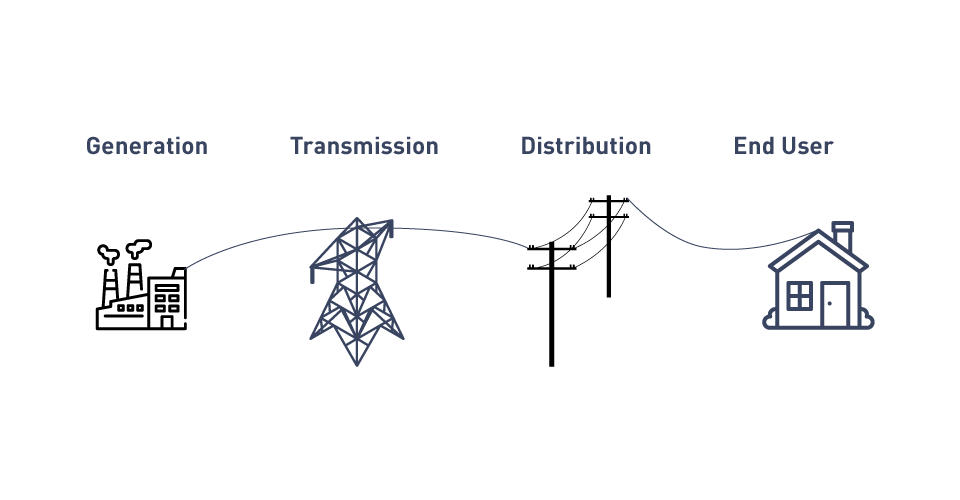
Figure 1: The three main components of the cost of AC power supply
Enhancing System Reliability:
Facilitating Market Operations: The pricing and trading of electricity are determined by economic concepts that govern the functioning of electrical markets. To maintain stable prices, effective resource allocation, and fair competition in these marketplaces, smart economic planning is necessary. Having a thorough understanding of market dynamics—such as supply and demand, price elasticity, and market structures—allows policymakers to create rules and regulations that support a dynamic and competitive marketplace.
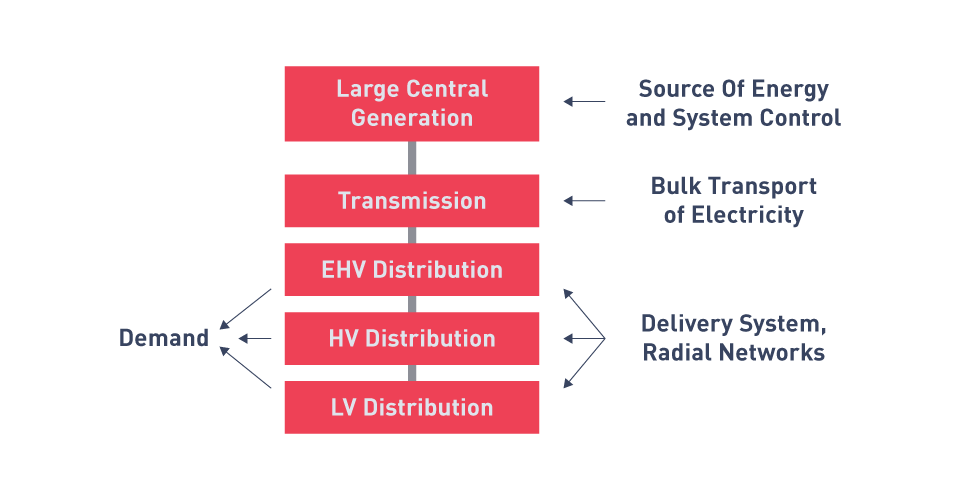
Figure 2: Four main sectors of a conventional power system: generation, bulk transmission, distribution and demand
Encouraging Sustainable Practices: In order to encourage sustainability in electrical systems, economic factors are essential. Investments in cutting-edge technologies, energy-efficient practices, and renewable energy sources frequently call for large sums of money. Economic analysis supports the switch to greener energy solutions by assisting in the evaluation of the investments' long-term benefits and payback times. Economically sound incentives and subsidies can help promote the adoption of sustainable practices even more.
Optimizing Resource Allocation: Another crucial factor impacted by economic factors is the effective distribution of resources. This covers the best locations for power plants, transmission line routing, and distribution network implementation. Economic models and instruments aid in figuring out how to use resources most effectively, reducing waste and increasing productivity. This guarantees that electrical systems run as efficiently as possible, getting the most out of every dollar invested.
Supporting Policy and Regulatory Decisions: To influence how electricity systems will develop in the future, regulators and policymakers turn to economic research. Economic concepts serve as the foundation for decisions about investment incentives, carbon pricing, tariffs, and subsidies. The goal of these choices is to provide a fair and equitable system that safeguards the interests of consumers and the environment while promoting innovation and ensuring affordability. Economic factors give policymakers the information they need to create robust and sustainable electricity systems.
Addressing Social and Economic Equity: Social and economic equity concerns are addressed by economic factors in electrical systems. Reliable and reasonably priced power access is essential for both economic growth and a high standard of living. Economic planning ensures the equitable distribution of electricity's benefits across diverse geographic regions and populations. This involves taking into account low-income households, electrifying rural areas, and integrating underserved groups into the electrical grid.
Important Terminology
Vertically Integrated Utilities: These businesses manage every step of the electrical supply chain, from production to transmission and distribution. Although this allows these utilities to streamline operations, it also frequently results in less competition and more regulatory control because they oversee every part of the electrical supply.
Generating Companies: Known as "gencos," generating companies are organizations primarily focused on producing electricity. Unlike vertically integrated utilities, generating businesses typically sell the power they generate to the wholesale market or directly to utilities, leaving the transmission and distribution to them.
Distribution Companies: Also referred to as "discos," distribution firms are in charge of distributing energy from the transmission network to end consumers, which can include businesses, homes, and industries. They oversee the local distribution network, guaranteeing dependable electricity supply and upholding the necessary infrastructure to link customers to the larger power grid.
Transmission Companies: Also known as "transcos," transmission firms are in charge of carrying high-voltage electricity from power facilities to distribution networks. In order to ensure the effective and dependable transfer of power over long distances, they oversee and maintain the infrastructure, which includes transmission lines and substations, linking generation facilities with distribution companies and major consumers.
The Regulator: The government or an independent organization tasked with monitoring and implementing rules and regulations inside the electrical market is referred to as the regulator in the context of electricity systems. This organization safeguards consumer interests, establishes tariffs, maintains fair competition, and makes sure electrical suppliers follow the law and environmental regulations.
Small Consumers: In the context of electrical systems, "small consumers" are individuals or small enterprises that, on average, use less energy than major industrial or commercial users. These customers frequently have limited bargaining power in the electrical market and are subject to regulated pricing.
Large Consumers: In the context of electrical systems, "large consumers" are businesses or industries with high electricity consumption and energy demands. Owing to their large consumption, they frequently have more clout in the electrical market and can be able to negotiate better terms or contracts, as well as take part in other market mechanisms like demand response programs.
Wholesale Market: Before electricity enters the retail market, it is often bought and sold in large amounts between generators and utilities or major customers. This is known as the "wholesale market" in electricity networks. The dynamics of supply and demand drive prices in the wholesale market, which is essential to guaranteeing the effective distribution of power throughout the grid.
Retail Market: In electrical systems, the "retail market" is the place where energy is sold directly to consumers, including homes, companies, and small businesses. Electricity suppliers compete in the retail market to supply services to customers, who pay for the power according to usage, usually via tariffs or billing plans.
Power Purchase Agreement (PPA): An electricity generator (such as a developer of renewable energy) and a buyer (usually a utility or major power user) enter into a long-term contract for the purchase of electricity. A PPA gives the generator financial security and the buyer a guaranteed supply of electricity by requiring the buyer to buy the generated electricity at a predetermined price.
Regulated Market: In the context of electricity networks, a regulated market is one in which the terms and pricing for the generation, transmission, and distribution of energy are fixed by the government or a regulatory authority. In these kinds of marketplaces, utilities frequently function as monopolies, and consumers are protected by regulations governing their rates and services.
Deregulated Market: In energy systems, a deregulated market promotes competition between several electrical providers, allowing customers to select their preferred source. These markets typically regulate energy transmission and distribution to ensure access and reliability, but leave the generation and retail sale of electricity to competition.
Feed-in Tariffs (FiTs): These policy tools, which ensure long-term contracts and set payments to producers for the power they produce, are intended to promote the use of renewable energy sources. These tariffs, which are normally higher than the going rate, offer financial incentives for the advancement of renewable energy sources like hydroelectric, solar, and wind power.
Renewable Portfolio Standard (RPS): RPSs are mandates imposed by regulations on utilities requiring them to generate or get a specific percentage of their electricity from renewable sources. By imposing strict deadlines on utilities, the RPS seeks to promote the use of renewable energy sources like biomass, solar power, and wind power.
Overview of Key Concepts
A number of fundamental ideas are included in the economics of electricity systems, which are necessary to comprehend the operational and financial dynamics of producing, transmitting, and distributing electric power. These ideas offer a framework for evaluating the affordability, effectiveness, and sustainability of electrical systems. In this section, we will explore several fundamental economic theories that are relevant to electrical systems.
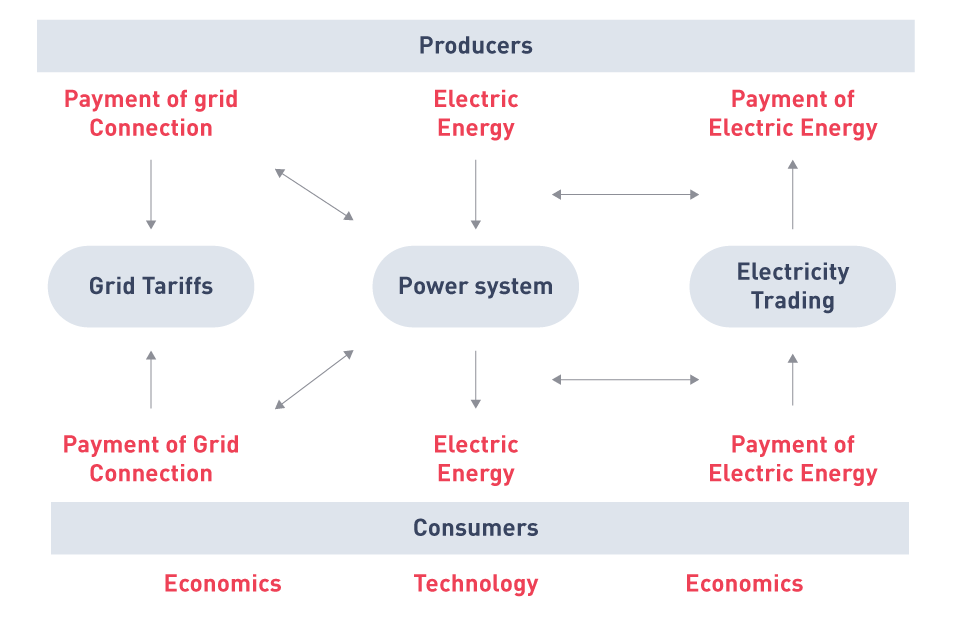
Figure 3: Overview of an electricity market
Supply and Demand: The economics of electrical systems is based on the fundamental idea of supply and demand. Demand is the quantity of electricity that customers are willing to buy at different price points, whereas supply is the amount of electricity that electricity providers are willing to produce and sell at different prices. The price and amount of electricity that reach market equilibrium are determined by the junction of the supply and demand curves. Comprehending these dynamics is essential for forecasting market trends and making plans for future energy requirements.
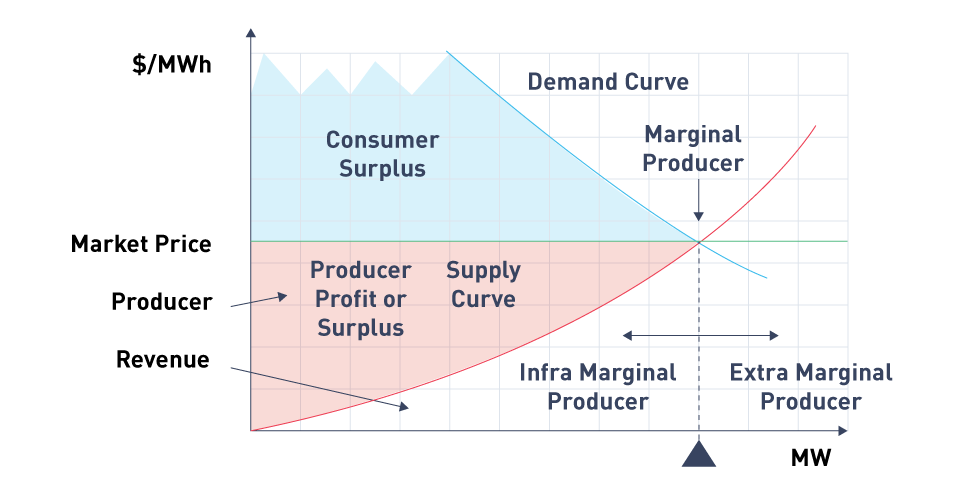
Figure 4: Supply demand curve
Marginal Cost and Average Cost: The additional expense incurred by generating one additional unit of energy is known as the marginal cost. It is a crucial idea in the price and production of energy since it indicates the output level that maximizes savings. Conversely, average cost is calculated by dividing total production costs by the quantity of units produced. Setting pricing that ensures profitability for power providers while covering production costs requires consideration of both marginal and average costs.
Economies of Scale: A corporation can attain cost advantages by expanding its manufacturing scale, which is known as economies of scale. Because they distribute fixed costs over a greater output and use resources more efficiently, larger power plants or expanded grid infrastructure can frequently provide energy at a cheaper average cost per unit in the context of electricity networks. Understanding economies of scale is essential for both strategic planning and infrastructure investments in the electrical industry.
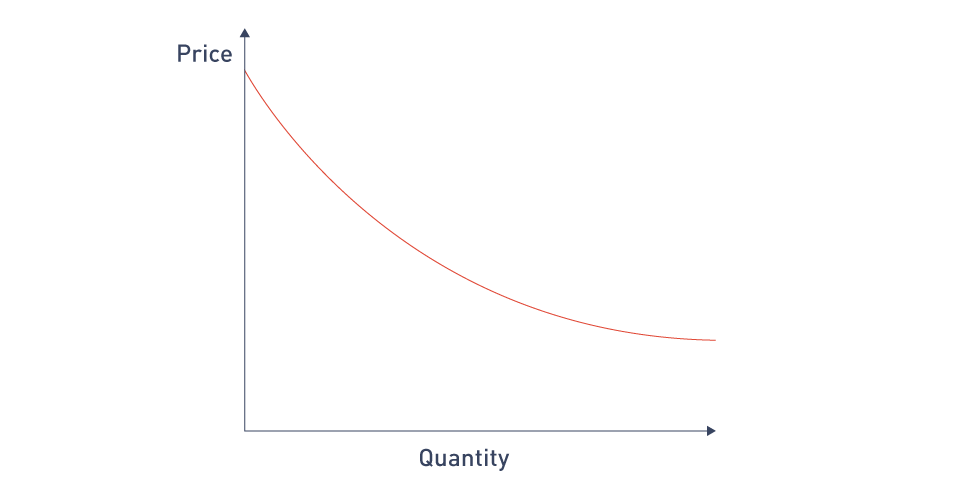
Figure 5: Inverse demand function illustrating economies of scale
Fixed and Variable Costs: There are fixed and variable expenses associated with electricity networks. Fixed costs are expenses that are unaffected by the volume of output. Examples of these include the capital costs incurred in constructing a power plant and the costs related to maintaining transmission lines. On the other hand, variable costs, like fuel and maintenance costs, vary according to the amount of electricity produced. In electrical systems, knowing the difference between fixed and variable costs is crucial for pricing, budgeting, and financial planning.
Cost-Benefit Analysis: This methodical technique assesses the financial viability of investment initiatives and policy choices. When it comes to electricity systems, cost-benefit analysis (CBA) compares the whole projected expenses of a project (such as constructing a new power plant or modernizing grid infrastructure) with the total expected benefits (such as improved reliability, lower operating costs, or fewer emissions). Using this approach, decision-makers can select projects that offer the highest net benefit to investors, operators, and society.
Externalities: Externalities are expenses or advantages resulting from an economic transaction that do not directly benefit or affect third parties. Externalities in electrical systems can be either positive or negative. Pollution and greenhouse gas emissions from fossil fuel power plants are examples of negative externalities that have an impact on society but are not accounted for in the market price of electricity. Additional social advantages come from positive externalities like better air quality and health benefits from renewable energy plants. Achieving sustainable and socially conscious electrical systems requires addressing externalities through laws and regulations.
Time-of-Use Pricing: A rate structure known as time-of-use (TOU) pricing modifies the cost of electricity in accordance with the time of day and the volume of demand. Electricity costs are higher at times of peak demand to offset the higher cost of producing more energy and to incentivize customers to use less. On the other hand, when demand is minimal during off-peak hours, prices are cheaper. By optimizing grid consumption, balancing supply and demand, and lowering the need for expensive peak-time power, TOU pricing helps.
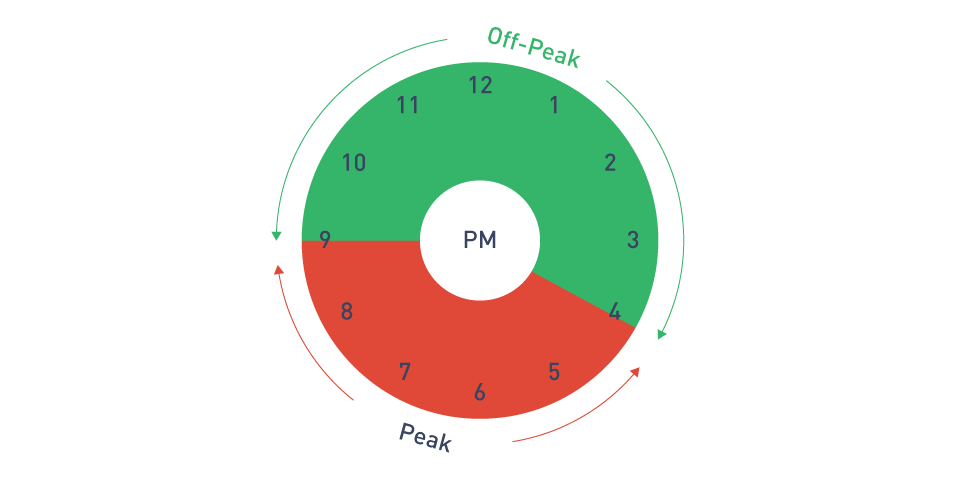
Figure 6: TOU pricing concept
Investment and Financing: Making large capital investments in electrical infrastructure is necessary, and funding these expenditures is a difficult procedure. Comprehending the various funding sources (e.g., debt, equity, public funding) and financial instruments (e.g., bonds, loans, public-private partnerships) is crucial for the effective execution of projects. A financially sustainable approach to the development and maintenance of electricity infrastructure is ensured by prudent investment and finance techniques.
Regulatory Framework: The laws, policies, and regulations that make up the regulatory framework governing electricity systems influence how the power industry operates and grows. Concerns including pricing, environmental regulations, market structure, and grid reliability are all covered by this framework. In order to maintain fair competition, safeguard customers, monitor the electrical market, and encourage sustainable behaviors, regulatory bodies are essential.
History of the Evolution of Power Markets
Power markets have seen an intriguing voyage of development during the past century, mirroring broader shifts in economics, technology, and policy. Gaining an understanding of this past is essential to understanding the current state of electricity networks and the economic theories that underpin them.
Early Monopolies and Regulation (Late 19th Century - Mid 20th Century):
With the introduction of electricity generation and delivery in the late 19th century, power markets came into existence. Power systems were initially modest, remote, and mostly owned by private individuals. These networks were frequently vertically integrated, which meant that within a given region, the production, transmission, and distribution of energy were all under the ownership of one single business.
Governments started to control the electrical business to guarantee dependable service and reasonable prices as electricity became an essential component of both industrial and household life. Electricity suppliers were given monopoly status in several nations, but they were still under government supervision to guard against power abuse and guarantee infrastructure spending.
Public Ownership and Expansion (Mid 20th Century):
Many governments had either taken over the management of power systems or established public utilities to do so by the middle of the 20th century. Large power plants, expanded transmission networks, and the integration of regional grids were among the many infrastructural projects undertaken during this time. The main goals were to guarantee affordable, dependable electricity for both household and commercial use, as well as universal access to it.
Large-scale hydroelectric and nuclear power projects also gained popularity during this century in various regions of the world, but because of their enormous initial costs and protracted development periods, these projects needed strong government support.
Deregulation and Market Liberalization (1980s - 2000s):
With the advent of deregulation and market liberalization in the late 20th century, the power business underwent a dramatic transformation. The idea that competition may spur innovation, cost savings, and increased operational efficiency in the electrical industry served as the impetus for these improvements. In the 1980s, the UK was among the first nations to deregulate its energy market; the US, other European nations, and other areas soon followed. Deregulation entailed giving private businesses the opportunity to compete in the retail and generation of electricity as well as the division of electricity generation, transmission, and distribution into separate industries. Because transmission and distribution are inherently monopolistic, they have usually stayed regulated.
Wholesale electricity markets were created by market liberalization, allowing for the buying and selling of electricity through frequently competitive bidding procedures. Better pricing signals were made possible by these markets, which promoted more efficient production and consumption. As a result of the reform, independent system operators (ISOs) and power exchanges were created to oversee the grid and guarantee equitable access to the transmission network.
Integration of Renewable Energy and the Modern Era (2000s - Present):
Since renewable energy sources like wind, solar, and hydropower are becoming more and more prevalent, the early 21st century has presented power markets with both new challenges and opportunities. Due to their unpredictable and sporadic nature, these resources presented problems for conventional energy markets that relied on dispatchable, predictable power sources like nuclear, natural gas, and coal.
Power markets have to adapt more in order to handle the increasing proportion of renewable energy sources. To maintain grid stability and dependability, innovations including capacity markets, demand response plans, and energy storage technologies have been created. Flexible resources that can swiftly ramp up or down in response to variations in supply and demand are encouraged by these systems. Power markets have also changed as a result of the development of smart grid technologies and the incorporation of distributed energy resources (DERs), such as battery storage systems and rooftop solar panels. These developments have put the conventional centralized paradigm of power networks to the test by enabling more localized and decentralized electricity generation.
Globalization and the Future of Power Markets:
There is an increasing trend towards globalization as power markets continue to change, and cross-border electricity trading is becoming more widespread. This is especially true in Europe, where nations are harmonizing market regulations and connecting their grids more often to build a more unified and effective power market.
Future developments in technology, the need to combat climate change, and the ongoing integration of renewable energy sources will probably influence how power markets develop. To ensure that electricity markets continue to be effective, dependable, and able to fulfill the demands of a low-carbon future, policymakers, regulators, and industry stakeholders will need to adjust to these changes.
Significance of Cost-Effective Operation and Planning
The need to effectively balance supply and demand while lowering costs and guaranteeing dependable service drives the operation and planning of electrical networks. It is impossible to overestimate the importance of cost-effective planning and operation in energy systems since these factors have a direct bearing on the sustainability of the environment, economic stability, and the general operation of the power grid.
Economic Stability: Preserving economic stability in the power industry and the overall economy requires cost-effective management and planning. Almost every economic activity, from home consumption to industrial production, depends on electricity. Utilities are able to maintain steady and reasonably priced rates for both consumers and businesses by streamlining the expenses related to producing, transmitting, and distributing power. Because high electricity costs can hinder industrial competitiveness and raise living expenses, affordability is crucial for economic growth.
Investment Efficiency: The energy industry necessitates large capital expenditures for infrastructure, including distribution networks, transmission lines, and power plants. Planning that is cost-effective makes sure that these expenditures are used wisely, giving priority to initiatives that have the greatest potential for capacity, efficiency, and dependability. Effective investment planning helps prevent undercapacity, which can result in supply shortages and dependability problems, and overcapacity, which can leave stranded assets. Utilities can guarantee long-term operations and improve their financial health by making the best investment decisions.
Environmental Sustainability: Encouraging environmental sustainability also requires cost-effective planning and operation. Greenhouse gas emissions are decreased and waste is minimized through efficient energy generation and distribution. For example, by lowering fuel costs and reducing reliance on fossil fuels, incorporating renewable energy sources like wind and solar into the power system can be financially advantageous over time. Demand-side management and energy efficiency planning can also lower total energy usage, which further lessens the impact on the environment.
Reliability and Resilience: Good planning and cost control play a major role in the reliability and resilience of electrical systems. The operation of vital infrastructure, including hospitals, transit networks, and communication systems, depends on a steady supply of electricity. The grid's infrastructure undergoes affordable upkeep and modernization to withstand and swiftly recover from any disruptions, including cyberattacks, natural catastrophes, and technical malfunctions. Utilities may improve the resilience of their system and guarantee uninterrupted service even in unfavorable circumstances by strategizing for redundancy and integrating smart grid technologies.
Technological Innovation: Adoption of cutting-edge technology that can boost productivity and cut expenses is encouraged by cost-effective planning. Smart meters, automated demand response systems, and grid-scale energy storage are examples of cutting-edge technology that can improve the integration of renewable energy sources and optimize grid operations. Utility companies can increase their operational flexibility, improve their demand forecasts, and distribute energy more efficiently by investing in these technologies. This technological breakthrough is essential for adjusting to the changing needs of contemporary electrical systems.
Policy and Regulatory Compliance: Careful planning guarantees adherence to laws and guidelines that support economical and sustainable energy use. Governments and regulatory agencies frequently establish goals for energy efficiency, carbon reduction, and the use of renewable energy. Planning wisely saves utilities money while enabling them to reach these goals. Additionally, it makes it possible for utilities to benefit from grants and incentives intended to encourage investments in sustainable energy and cutting-edge technology.
Consumer Benefits: In the end, reliable and reasonably priced power is provided by cost-effective operation and planning, which benefits consumers. Since frequent rate hikes are less necessary due to efficient operations, power is more affordable for all economic groups. Utilities can also provide innovative services like dynamic pricing and distributed generation, which enable customers to better control their energy use and lower their electricity bills, by investing in smart grid technologies and renewable energy.

直接登录
创建新帐号